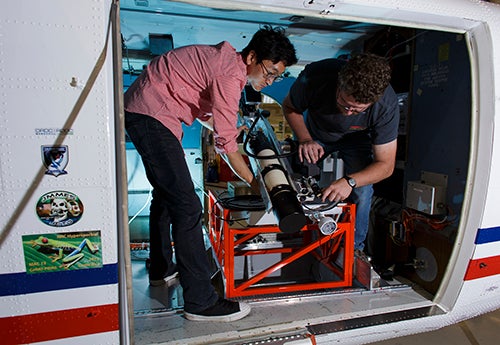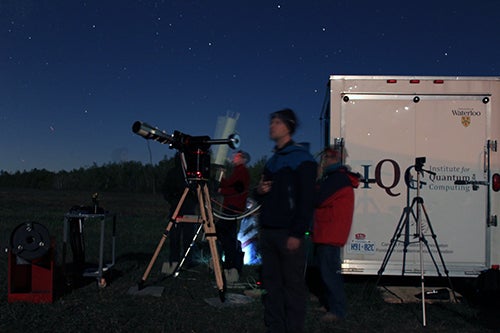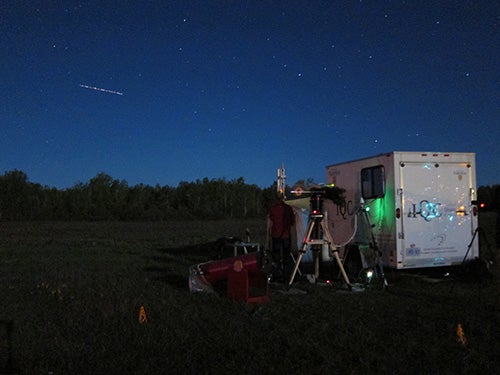Waterloo, Ont. (Wednesday, December 21, 2016) — Researchers from the Institute for Quantum Computing at the University of Waterloo in Canada are the first to transmit a quantum key securely from a source on the ground to a receiver on an aircraft. The uplink is a prototype for secure quantum communication and shows the viability of the team’s quantum communication satellite mission (QEYSSat) proposal.
Thomas Jennewein led the team of experts in Quantum Key Distribution who placed the custom-built source, called Alice, on the ground in Smiths Falls, Ontario. Alice randomly prepared photons in four different polarization states — horizontal, vertical, +45 degrees and -45 degrees — and sent them to the custom-built receiver payload aboard an aircraft of National Research Council Canada. The receiver payload, called Bob, detected the photons that weren’t lost in the beam spread, analyzed the polarizations and recorded the time. Alice and Bob then compared their data to determine which photons made it and their polarization states to construct a secret key.
“The system we tested is entirely based on hardware that would go on a satellite for long-distance communication,” said Jennewein, an associate professor at IQC and the Department of Physics and Astronomy at the University of Waterloo. “We demonstrated that everything works as it should. There is advantage to using a satellite for quantum communication: on the ground photons are absorbed in optical fibre after about 100 kilometres, whereas the absorption loss doesn’t happen outside the atmosphere.”
The paper, Airborne demonstration of a quantum key distribution receiver payload, is now available on the arXiv.
Professor Jennewein, also an affiliate member of the Perimeter Institute for Theoretical Physics, is available for media interviews.

Postdoctoral fellow Jeongwan Jin and PhD candidate Christopher Pugh setting up Bob on the NRC Twin Otter Airborne Research Aircraft. (Source: NRC)

Alice at the ground station in Smiths Falls, Ontario. (Source: IQC)

A secure uplink is created between Alice and Bob as the NRC's Twin Otter Airborne Research Aircraft flies overhead. (Source: IQC
Media Contact:
Pamela Smyth
University of Waterloo
519-888-4777
www.uwaterloo.ca/news
@uWaterlooNews
Attention broadcasters: Waterloo has facilities to provide broadcast quality audio and video feeds with a double-ender studio. Please contact us to book.